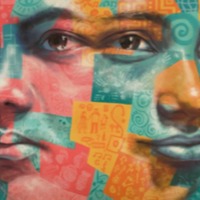
JE
There are an estimated 10,000 people living in modern slavery in Hong Kong (GSI 2018). Approximately 370,000 foreign domestic workers, primarily from Indonesia and the Philippines, work in Hong Kong; some become victims of forced labour in the private homes in which they are employed. An NGO report released in 2016 estimated as many as one in six foreign domestic workers is a victim of labour exploitation. Employment agencies often charge job placement fees in excess of legal limits, and sometimes withhold identity documents, which may lead to situations of debt bondage of workers in Hong Kong. The accumulated debts sometimes amount to a significant portion of the worker’s first year salary. Some employers or employment agencies illegally withhold passports, employment contracts, or other possessions until the debt is paid. Some workers are required to work up to 17 hours per day, experience verbal, sexual or physical abuse in the home, and/or are not granted a legally required weekly day off. JE, a 37-year-old woman from Trenggalek, reported having experienced sexual harassment at a training centre in Jakarta.
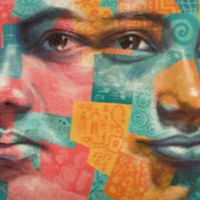
LE
There are an estimated 10,000 people living in modern slavery in Hong Kong (GSI 2018). Approximately 370,000 foreign domestic workers, primarily from Indonesia and the Philippines, work in Hong Kong; some become victims of forced labour in the private homes in which they are employed. An NGO report released in 2016 estimated as many as one in six foreign domestic workers is a victim of labour exploitation. Employment agencies often charge job placement fees in excess of legal limits, and sometimes withhold identity documents, which may lead to situations of debt bondage of workers in Hong Kong. The accumulated debts sometimes amount to a significant portion of the worker’s first year salary. Some employers or employment agencies illegally withhold passports, employment contracts, or other possessions until the debt is paid. Some workers are required to work up to 17 hours per day, experience verbal, sexual or physical abuse in the home, and/or are not granted a legally required weekly day off. LE, a 28-year-old woman from Sumatra (2010- ), went to the Consulate after she ran away from her employer in June 2011.
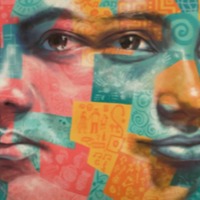
HI
There are an estimated 10,000 people living in modern slavery in Hong Kong (GSI 2018). Approximately 370,000 foreign domestic workers, primarily from Indonesia and the Philippines, work in Hong Kong; some become victims of forced labour in the private homes in which they are employed. An NGO report released in 2016 estimated as many as one in six foreign domestic workers is a victim of labour exploitation. Employment agencies often charge job placement fees in excess of legal limits, and sometimes withhold identity documents, which may lead to situations of debt bondage of workers in Hong Kong. The accumulated debts sometimes amount to a significant portion of the worker’s first year salary. Some employers or employment agencies illegally withhold passports, employment contracts, or other possessions until the debt is paid. Some workers are required to work up to 17 hours per day, experience verbal, sexual or physical abuse in the home, and/or are not granted a legally required weekly day off. HI, a 40-year-old woman trafficked from Ponorogo to Hong Kong (2009-2011), described hersituation at a training centre in Jakarta.
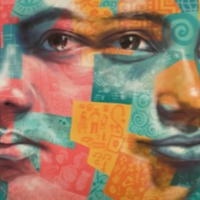
GM
There are an estimated 10,000 people living in modern slavery in Hong Kong (GSI 2018). Approximately 370,000 foreign domestic workers, primarily from Indonesia and the Philippines, work in Hong Kong; some become victims of forced labour in the private homes in which they are employed. An NGO report released in 2016 estimated as many as one in six foreign domestic workers is a victim of labour exploitation. Employment agencies often charge job placement fees in excess of legal limits, and sometimes withhold identity documents, which may lead to situations of debt bondage of workers in Hong Kong. The accumulated debts sometimes amount to a significant portion of the worker’s first year salary. Some employers or employment agencies illegally withhold passports, employment contracts, or other possessions until the debt is paid. Some workers are required to work up to 17 hours per day, experience verbal, sexual or physical abuse in the home, and/or are not granted a legally required weekly day off. GM, a 45-year-old woman from Banyuwangi, details her daily routine as a migrant domestic worker in Hong Kong.
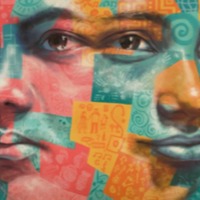
DE
There are an estimated 10,000 people living in modern slavery in Hong Kong (GSI 2018). Approximately 370,000 foreign domestic workers, primarily from Indonesia and the Philippines, work in Hong Kong; some become victims of forced labour in the private homes in which they are employed. An NGO report released in 2016 estimated as many as one in six foreign domestic workers is a victim of labour exploitation. Employment agencies often charge job placement fees in excess of legal limits, and sometimes withhold identity documents, which may lead to situations of debt bondage of workers in Hong Kong. The accumulated debts sometimes amount to a significant portion of the worker’s first year salary. Some employers or employment agencies illegally withhold passports, employment contracts, or other possessions until the debt is paid. Some workers are required to work up to 17 hours per day, experience verbal, sexual or physical abuse in the home, and/or are not granted a legally required weekly day off. DE, a 24-year-old woman from Malang was made to work more than 18 hours a day, seven days a week:
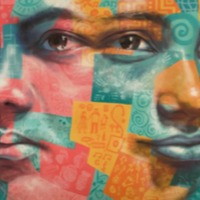
AU
There are an estimated 10,000 people living in modern slavery in Hong Kong (GSI 2018). Approximately 370,000 foreign domestic workers, primarily from Indonesia and the Philippines, work in Hong Kong; some become victims of forced labour in the private homes in which they are employed. An NGO report released in 2016 estimated as many as one in six foreign domestic workers is a victim of labour exploitation. Employment agencies often charge job placement fees in excess of legal limits, and sometimes withhold identity documents, which may lead to situations of debt bondage of workers in Hong Kong. The accumulated debts sometimes amount to a significant portion of the worker’s first year salary. Some employers or employment agencies illegally withhold passports, employment contracts, or other possessions until the debt is paid. Some workers are required to work up to 17 hours per day, experience verbal, sexual or physical abuse in the home, and/or are not granted a legally required weekly day off. AU, a 30-year-old woman from Tulungagung
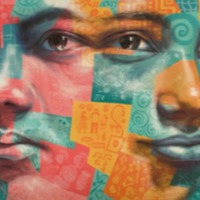
Terry
There are an estimated 403,000 people living in modern slavery in the United States (GSI 2018). Sex trafficking exists throughout the country. Traffickers use violence, threats, lies, debt bondage and other forms of coercion to compel adults and children to engage in commercial sex acts against their will. The situations that sex trafficking victims face vary, many victims become romantically involved with someone who then forces them into prostitution. Others are lured with false promises of a job, and some are forced to sell sex by members of their own families. Victims of sex trafficking include both foreign nationals and US citizens, with women making up the majority of those trafficked for the purposes of commercial sexual exploitation. In 2015, the most reported venues/industries for sex trafficking included commercial-front brothels, hotel/motel-based trafficking, online advertisements with unknown locations, residential brothels, and street-based sex trafficking. Terry was sexually abused at the age of 15 by her boss, an event that she pinpoints as the seed from which her problems began. That same year she suffered a number of other traumas that led to the beginning of her cocaine use. 10 years later, married with children, Terry’s drug use became out of control and she lost custody of her children and ended up on the streets. Within two months of this, she found herself trafficked in to a life of prostitution. Here Terry, now executive director of the survivor led organization Breaking Free tells of the environment in which many women subjected to forced prostitution grow up in, describes who it is that sets the demand for prostitutes, and tells of the warning signs among children vulnerable to trafficking.

The Truth Behind Closed Doors
'The Truth Behind Closed Doors' provides a lesson plan and resources for teaching about domestic servtiude - the exploitation and mistreatment of domestic workers, usually in private homes. Exploitation of domestic workers can happen to migrants domestic workers who have left their fmailies to earn money abroad, but also to workers in private homes in their own country of origin.The lesson plan provides two 55-minute lessons, depending on the level of your students. It is aimed at Older teens, young adults and adults, B2+ (upper intermediate to advances)Materials include: Rose’s personal narrative, student worksheet, autonomous learning resources, information about human trafficking and modern slavery, transcripts of audio recordings, slides, Teacher’s Guide Audio for this lesson plan can be found at https://youtu.be/i28Bev-_sFs
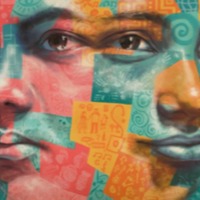
David Ninteretse
In 1993, Burundi’s first democratically elected president was assassinated in a coup d’état. Melchior Ndadaye, of the majority Hutu ethnic group, had sought during his three months in office to ease tensions between Hutu and the minority Tutsi, which had ruled Burundi for decades and continued to dominate the army. In response, Hutu paramilitary groups formed, and as quid pro quo attacks between Hutu and Tutsi escalated, Burundi spiraled into civil war.Among the many victims of the war were children. Indignant over Ndadaye’s death and the denial of political power the Hutu believed their due, extremist factions exhorted teenagers and even younger children to join their ranks, and for more than a decade, thousands of children lived in Burundi’s forests in deplorable conditions, raiding villages, camps, and military installations, both suffering and committing horrific violence. Many were girls kept as sexual slaves for older soldiers David became involved in the Burundi Democratic Youth when he was 15 years old. After the coup in 1993, he became a Hutu child soldier, David tells of the hunger and abuse he faced as a child soldier as he was forced to walk barefoot for days with little food and water. David tells of his experience as a child soldier, his attempts to gain an education to become a political leader, and his retirement.
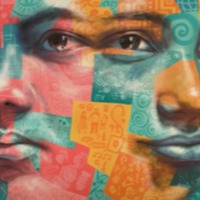
Haile
There are an estimated 451,000 people living in modern slavery in Eritrea (GSI 2018). The small country has a unique system of compulsory, open-ended military service for citizens that makes it one of the most oppressive states in the world. The government has enforced its current policy of sending all secondary school students to serve for a minimum of twelve months since 2003. While Eritrean law puts the minimum conscription age at 18, many teenagers find themselves recruited during high school at age 16 or even younger. In rural areas, where formal education is rarer, the army will visit villages to round up young girls and boys who look roughly of age, to begin their program of combat training and forced labour. Haile was 17 years old when he was taken for military training. He recalls the other minors in the training camp with him and how they were subjected to physical abuse and suffered from a lack of food.
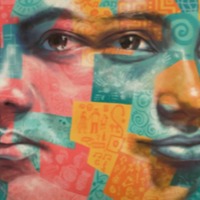
Yogendra
The Global Slavery Index 2018 estimates that on any given day there were nearly 8 million people living in modern slavery in India. While the bonded labour system is formally abolished and criminalised, recent research indicated that bonded labour is still prevalent in India. A 2016 report found that in the state of Tamil Nadu, 351 of 743 spinning mills used bonded labour schemes, otherwise known as Sumangali schemes. Similarly in granite quarries, wage advances and loans with an interest ranging from 24% to 36% are used to bond workers. Situations of debt bondage are often aggravated by the need to raise emergency funds or take on loans for health crises. Yogendra tells of his experience as a bonded labourer in Uttar Pradesh. He was approached by a broker offering him 50,000 rupees and a hectare of land if he worked a year. After signing a blank piece of paper, Yogendra received just 37,000 rupees and was forced to work under threats and verbal abuse. Yogendra tells of having to work off money borrowed for his sister’s wedding and his children’s school fees.
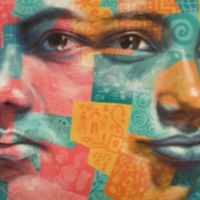
Sophia
There are an estimated 336,000 people living in modern slavery in Tanzania (GSI 2018). Internal trafficking is more prevalent than transnational trafficking and characteristically facilitated by victims’ family members, friends, or intermediaries offering assistance with education or securing employment in urban areas. Impoverished children from the rural interior remain most vulnerable to trafficking. Girls are exploited in domestic servitude throughout the country and in sex trafficking particularly in tourist hubs and along the border with Kenya. Sophia was 14 years old when she became a domestic worker. Forced to work long hours with no rest, Sophia was subjected to verbal abuse and her pay was withheld. One day Sophia was finally able to leave her situation and contacted Agape, an organisation supported by Anti-Slavery International. Sophia is now rebuilding her life.
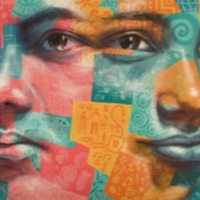
Gracie
It is estimated that there are over 9.2 million people living in conditions of modern slavery across Africa, with 101,000 of these in Central African Republic (GSI 2018). When considering forms of modern slavery, the rate of forced marriage (4.8 victims per 1000 people) was higher than the rate of forced labour (2.8 victims per 1000 people). Over half of all victims of forced labour were held in debt bondage, with similar proportions of men and women in the region trapped through dept. An estimated 400,000 people in Africa were victims of forced sexual exploitation. Within the region, Eritrea, Burundi, and Central African Republic were the countries with the highest prevalence of modern slavery; however, Nigeria and the Democratic Republic of the Congo had the highest absolute number and accounted for over one-quarter (26.3 percent) of all victims in the region. Gracie was 11 when her family was killed due to political and ethnic tension in Central Africa. A family friend took her to a neighbouring country to live with a woman where she was forced to provide sexual services to men. After two years in this brothel, Gracie was taken by a man called Abasi to London where she was once again forced in to prostitution. Gracie was able to escape after a year of sexual abuse and confinement. Told she should seek asylum Gracie appealed to the immigration office, however her passport had been faked to state she was 22 rather than 15 and she was arrested for document forgery. With the help of the NSPCC and a solicitor, Gracie was able to challenge local child services who stated she was an adult and able to find a safe place to live.
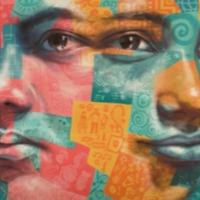
Kommu Sandya
It is estimated that almost 8 million people are living in conditions of modern slavery in India (GSI 2018). The skewed sex ratio in some regions of India has fuelled the trafficking and selling of women and young girls as brides within India. Women are reportedly sold off into marriage by their families, sometimes at a young age, and end up enduring severe abuse, rape and exploitation by their husbands. It is also reported that women and girls from impoverished backgrounds have been lured by promises of marriage by younger men from urban areas, then forced into sex work once married. With the authorities unable to prevent it, Kommu Sandya was married at 13 years old. She became pregnant and very ill within three months, having to abort the pregnancy at great cost to her parents. Though she became pregnant again and gave birth to a boy, her mother-in-law continues to physical and verbally abuse both Kommu Sandya and her children.
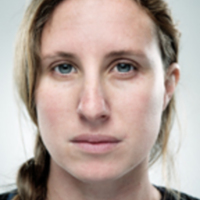
Esther
There are an estimated 403,000 people living in conditions of modern slavery in the United States (GSI 2018). Among this number, are children subjected to forced marriage. A study published on child marriage in 2011 determined that the prevalence of child marriage among women in the US was 8.9 percent, meaning that over 9.4 million US women were married at age 16 or younger. Forced marriage and child marriage are understudies problems within the United States and more research is needed to determine what drives its occurrence. Esther was 17 years old when she was forced to marry a boy against her will. She was subjected to emotional, physical and sexual abuse daily by her husband. After 9 years, Esther was finally able divorce her abusive husband, however was coerced into having her divorce arbitrated by a religious court that deemed she must raise her children in the same insular religion in which she was raised and married. Unchained provided Esther with an attorney who was able to win Esther full custody of her children and the rise to raise them as she chooses.
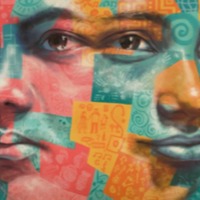
Ina
The Global Slavery Index 2018 estimates that on any given day there were nearly 8 million people living in modern slavery in India. The GSI 2018 reports an emerging trend in northeast India where organised trafficking syndicates operate along the open and unmanned internatinoal borders, dupiong or coercing young girls seeking employment outside their local area in to forced sexual exploitation. Many women and girls are lured with the promise of a good job but then forced in to sex work, with a 'conditioning' period involving violence, threats, debt bondage and rape. Ina was 12 years old when she was drugged, kidnapped and forced in to prostitution. Ina was forced to take heroin and alcohol, and was subjected to physical and sexual violence daily. Ina was finally rescued at the age of 17 having spent 5 years in forced sexual exploitation.
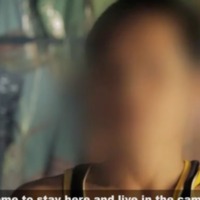
Saw Pol Lu
The UN has estimated that the number of refugees, asylum seekers and internally displaced people around the world has topped 65 million. Many of these people live in refugee camps across the globe. In Myanmar (Burma), thousands of people have fled civil war and found themselves confined to refugee camps in Thailand where they are vulnerable to human trafficking. In an attempt to provide for their families, refugees are lured for employment in Thailand and Malaysia then sold to employers as forced labourers. Saw Pol Lu fled Myanmar (Burma) to escape the civil wars and now lives in Mae La refugee camp along the Thai boarder. Here the widespread corruption and failed Thai policy led Saw Pol Lu, along with thousands of other refugees, in to the hands of human traffickers. Saw Pol Lu tells of the conditions and dangers faced by Burmese refugees in Thailand.

Nicole
Sex trafficking is a form of modern slavery that exists throughout the United States. Traffickers use violence, threats, lies, debt bondage and other forms of coercion to compel adults and children to engage in commercial sex acts against their will. The situations that sex trafficking victims face vary, many victims become romantically involved with someone who then forces them into prostitution. Others are lured with false promises of a job, and some are forced to sell sex by members of their own families. Victims of sex trafficking include both foreign nationals and US citizens, with women making up the majority of those trafficked for the purposes of commercial sexual exploitation. In 2015, the most reported venues/industries for sex trafficking included commercial-front brothels, hotel/motel-based trafficking, online advertisements with unknown locations, residential brothels, and street-based sex trafficking. Nicole was 17 when she fell under the seductive spell of a man who would lead her into prostitution and keep her there through threats and beatings. Nicole was estranged from her family and friends and didn’t initially trust law enforcement to help her. Nicole was eventually helped by an FBI Victim Specialist get away from her pimp and later testify against him.

Lisa
Sex trafficking is a form of modern slavery that exists throughout the United States. Traffickers use violence, threats, lies, debt bondage and other forms of coercion to compel adults and children to engage in commercial sex acts against their will. The situations that sex trafficking victims face vary, many victims become romantically involved with someone who then forces them into prostitution. Others are lured with false promises of a job, and some are forced to sell sex by members of their own families. Victims of sex trafficking include both foreign nationals and US citizens, with women making up the majority of those trafficked for the purposes of commercial sexual exploitation. In 2015, the most reported venues/industries for sex trafficking included commercial-front brothels, hotel/motel-based trafficking, online advertisements with unknown locations, residential brothels, and street-based sex trafficking. Lisa (name given) was 17 when she went to stay with her friend to escape an abusive home life. Her friend introduced her to a man who told Lisa he could help make her a model. Lisa was coerced in to prostitution, believing that the money she made would be used to help her modelling career. She was subjected to physical abuse when she refused to do what she was told, and was kept locked in hotel rooms for days. Lisa was finally able to escape with the help of the FBI, she is now a nursing assistant.
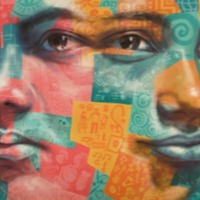
Amadou
Across Senegal, an estimated 50,000 boys living in traditional Quranic boarding schools, or daaras, are forced to beg for daily quotas of money, rice or sugar by their Quranic teachers, known as marabouts. Known as talibés, these children are sent by their parents to daaras to learn the holy Coran. Children in these daaras are often beaten, chained, bound, and subjected to other forms of physical or psychological abuse amounting to inhuman and degrading treatment. While in 2016 the government introduced a new programme to 'remove children from the streets', it has done little to reduce the alarming numbers of children subjected to exploitation, abuse and daily neglect. Amadou was sent to a daara to be a talibé in Dakar. After refusing to learn he was locked up for two years, being released once his 'sentence' was over. Once released, Amadou ran away during the hours of begging and sought reguge at a children's centre.